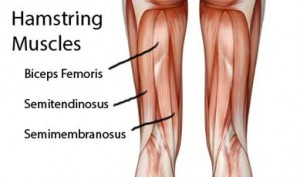 ActiveCare Physical Therapy, PC
ActiveCare Physical Therapy, PC
29 West 38th Street
Suite 601
New York, NY 10018

How to Recognize and Treat a Pulled Hamstring
The hamstrings are comprised of three muscles: the Biceps Femoris, Semitendinosus and Semimembranosus. It is a common injury for athletes, but can happen to the average person during daily physical activities. A pulled hamstring is a painful experience, but often people don’t recognize the injury as serious and fail to get timely treatment. That’s when a physical therapist can help can help an individual recover properly and quicker.
Many people take a wait-and-see approach, which can turn a few weeks of recovery time into a several months. A pulled hamstring injury is a condition where physical therapy helps the sooner you get in. Recovery from a hamstring strain can be anywhere from 2-3 weeks to 4-6 months. Untreated, it is more likely to be in the 4-6 month range.
Micro Tears versus Macro Tears
Exercises cause micro-tears in the muscle that heal and help the muscle gain strength. Sometimes, though, a large tear (macro-tear) happens and this injury that requires rehabilitation from a physical therapist to speed healing.
Treatment for a Pulled Hamstring
To treat a hamstring strain, the first step is reducing pain and inflammation. Most physical therapists recommend the PRICE principle (protect, rest, ice, compress and elevate). If the pain persists beyond the PRICE treatment, rehabilitation may be required to help the pulled hamstring recover. Additionally, during the initial treatment strenuous physical activities, such as exercising and sports play should be put on hold until a patient’s condition is resolved.
When you seek physical therapy for a pulled hamstring, a physical therapist will conduct an initial evaluation to assess the injury. They will use ultrasound results, electrical stimulation, ice or heat therapy and massage. This will help soft tissue mobilization to reduce pain, swelling, scar tissue and inflammation.
Pulled Hamstring Rehabilitation
Once a patient’s muscle is minimally painful or inflamed, they can start rehabilitation exercises to include light range-of-motion exercises, as well as strengthening exercises. 
An advanced exercise would be the Romanian Dead Lift. This is hamstring strengthening exercises is very effective because you are doing an eccentric exercise that is controlled and lengthening, a sort of contraction.
Be proactive: Visit a physical therapist right away to limit recovery time and to avoid further damage of a pulled hamstring.
Contact us today to schedule an appointment with the best physical therapist in NYC.
